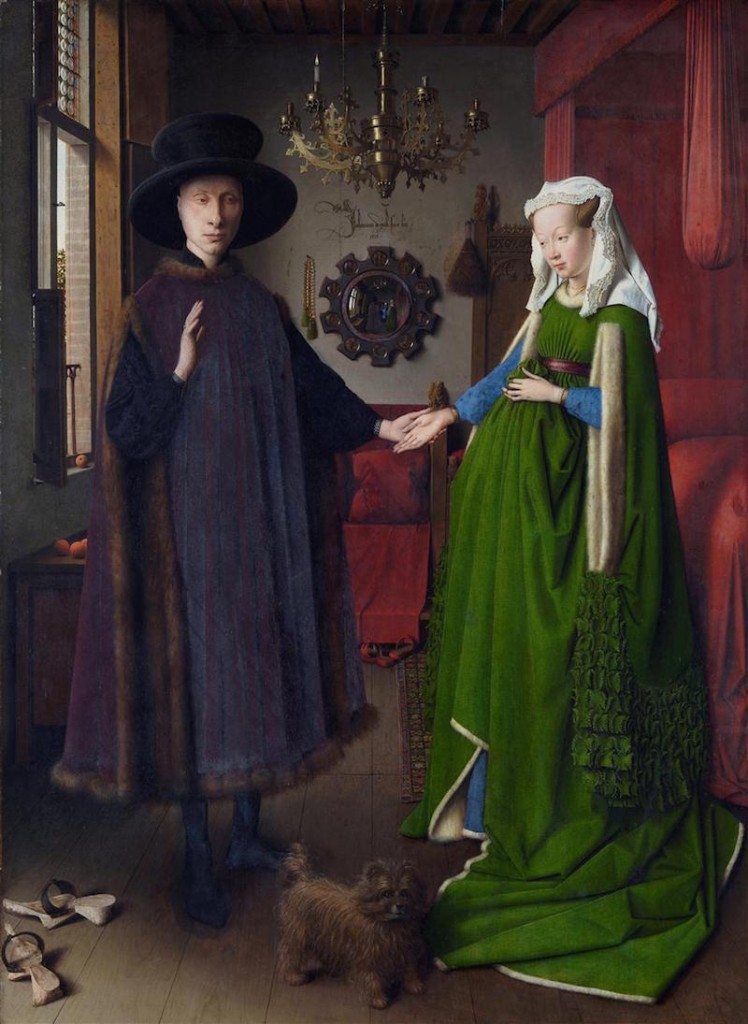The Arnolfini Wedding by Jan van Eyck
Episode #9 of the course “Most famous paintings of all time”
Year: 1434
Type: oil on oak panel of 3 vertical boards
Dimensions: 82.2 cm × 60 cm (32.4 in × 23.6 in)
Location: National Gallery, London
A progressive painting for its time, the masterpiece by Jan van Eyck known as The Arnolfini Wedding is also called The Arnolfini Portrait or The Portrait of Giovanni Arnolfini and His Wife. The first documented oil painting (completed in 1434) the portrait exhibits themes, traits, and techniques not seen popularly in the art world for centuries afterward. The Netherlandish painter Jan van Eyck likely created the work in Bruges, but its style quickly became influential in the heart of Renaissance art—Italy. By applying multiple layers of a thin, lightly-colored glaze, Van Eyck created unparalleled depth and details.
The central figures are a wealthy Flemish couple, presumably Giovanni di Niccolo Arnolfini and his bride. Scholars are unsure if this portrait is proof of a marriage, but if it is, it is the first painting of its kind to be used as one. The couple are shown in the bedroom of an expensive house, dressed in fine clothes and posed comfortably. The man greets the viewer directly with an extended arm, and the woman lowers her eyes and turns her head away from the viewer. In a unique twist, Van Eyck included a mirror on the wall behind the figures, showing their backs as well as additional figures. Presumably, one of these is the artist himself.
The Arnolfini Wedding is remarkable for its depiction of merchant-class life. The details that Van Eyck included to show the space’s reality have been compared with the authenticity of photography. It is also one of the first paintings to consider and utilize natural light in an interior space, many years before the impressionists began to focus on how lighting changes a space. Van Eyck’s perspective and playful break of the “fourth wall” through the use of the mirror long pre-dates any postmodern themes of the artist interacting directly with the viewer, but he was known for his personal flair in creative, innovative signatures.
Share with friends

